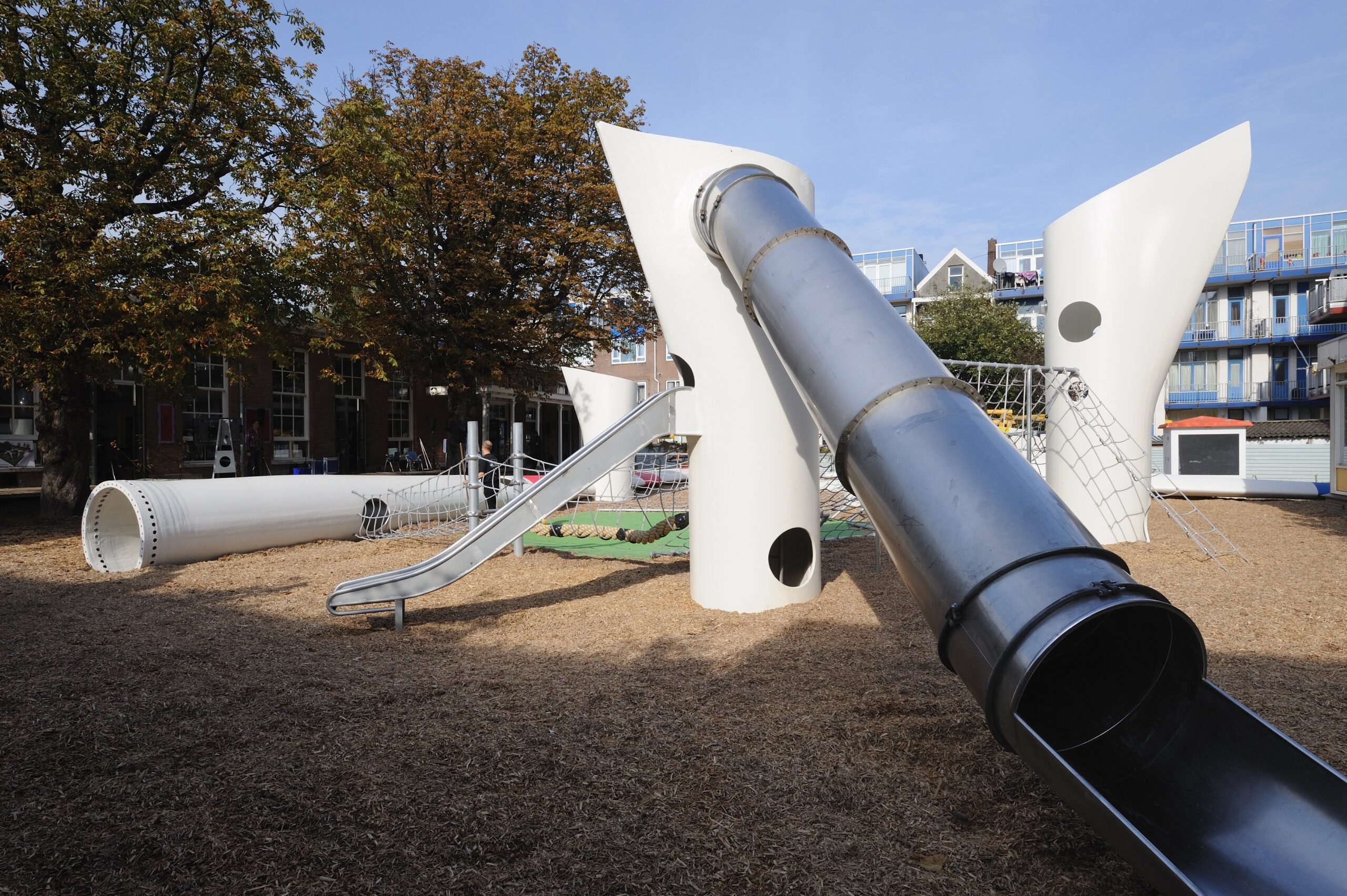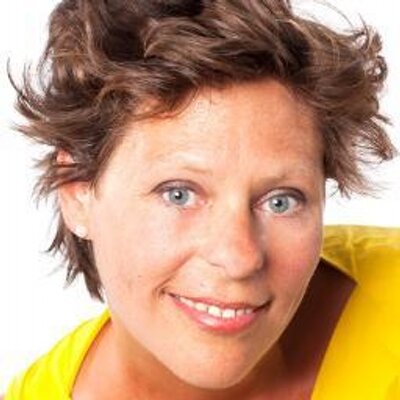
Innumerable wind turbines along the highway for the generation of energy. But those rotor blades are not going to last forever. Fortunately, they are screwed off and removed in good time. If you have ever seen a truck on the highway with a trailer carrying these blades, you can imagine that there is quite a bit of material that is left over that simply should not be thrown away. In Northwest Europe, many thousands of rotor blades from wind turbines will be scrapped within the next few years. If scrapping them is no longer an option, but recycling them is… how do you go about it? Try to imagine that for a moment!
Wind rotor blades were first used in a playground in Rotterdam 15 years ago by Dutch architecture firm Superuse Studios. Collaborative partner Blade Made shows how you can turn these huge rotor blades into, for instance, guardrails for along those very same highways. Or toys for a playground. They can be used all over the world to build street furniture, bridges, sound barriers, playground equipment, bike racks and so on. Their architectural strategy involves scaling up the good design of rotor blades, with an eye for the environmental challenges.
Quality, functionality and innovation spirit
This, along with more wonderful, creative Dutch examples can be seen during the Munich Creative Business Week being held from 16 May to 21 May in Munich, Germany. For the Netherlands, Germany is the most important trading partner they have. Research shows that it is especially those companies that manage to combine the conceptual quality of Dutch creativity with the technologically strong German design that are able to offer good business propositions.
The Dutch creative industry distinguishes itself by virtue of its quality, functionality and innovative spirit, along with its ambition to have a positive impact on society. And with considerable success: with a share of 29.5%, the Netherlands is the world’s largest exporter of creative services. On top of that, developments in society such as an ageing population, sustainability and digitalization are creating an ever-increasing demand for creative solutions. Cooperation between different sectors and countries is apparently the key to success.
Moving Horizons
Munich is called a creative ‘maker city’ in the same way that Amsterdam is. The Munich Creative Business Week is the largest design event in Germany and a showcase of the creative industry for an international audience. The ‘Moving Horizons‘ theme of MCBW 2022 is therefore a perfect platform for the Dutch. Precisely because the Netherlands wants to do its bit for urban development where liveability, logistics, mobility, food, water management and safety are concerned. Moreover, the Netherlands is generally good when it comes to creative ‘brainpower’ and experimentation, and we will demonstrate this in Munich from 16 May onwards! Reuse of rotor blades is one of the projects, alongside architecture and smart city solutions.
Both go hand in hand for Blade Made: the rotor blades in playgrounds foster interaction and imagination. Plus, when rotor blades are installed as sound barriers, then functionality is combined with aesthetic design. Blade Made designs lead to reductions in CO₂ emissions, and for us travellers, it is comforting to know that they will be dismantled in time, rather than crashing to the ground before their time.
About this column
In a weekly column, alternately written by Eveline van Zeeland, Derek jan Fikkers, Eugene Franken, Katleen Gabriels, PG Kroeger, Carina Weijma, Bernd Maier-Leppla, Willemijn Brouwer and Colinda de Beer, Innovation Origins tries to figure out what the future will look like. These columnists, sometimes joined by guest bloggers, are all working in their own way to find solutions to the problems of our time. So tomorrow will be good. Here are all the previous articles.







